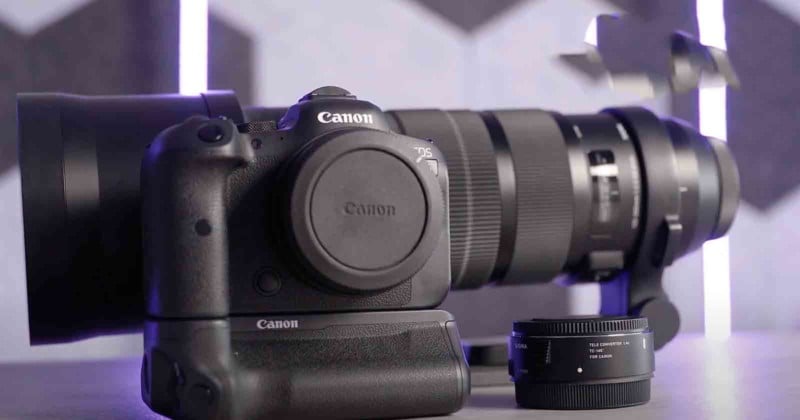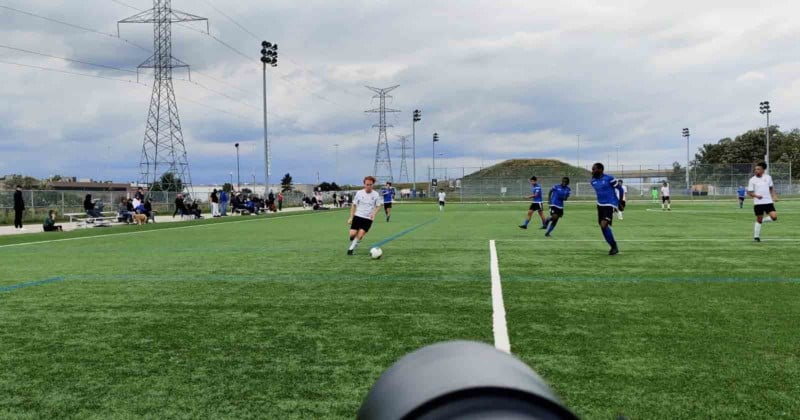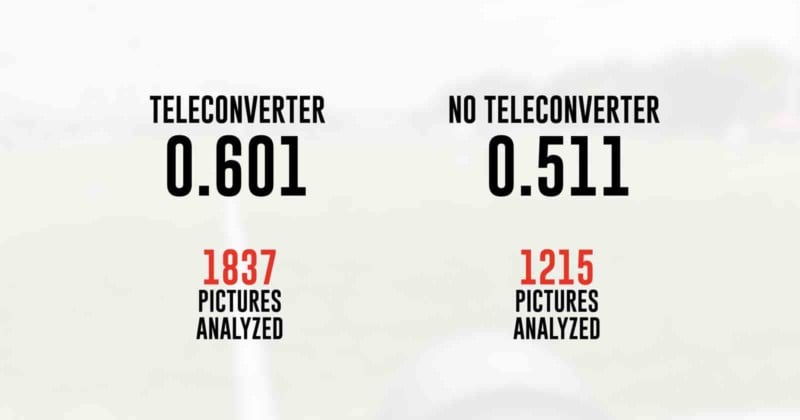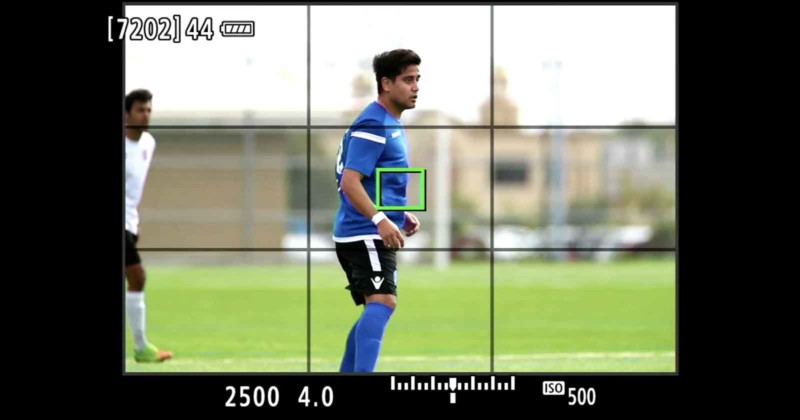Test Finds That Cropping is Better Than Using a Teleconverter
A professional photographer has analyzed more than 3,000 photos to see if cropping into a photo is better or worse than using a teleconverter.
The analysis was done by Kevin Raposo, who goes by the name The Speedy Photographer on YouTube, who found that a teleconverter doesn’t make images sharper and can actually dramatically affect the camera’s ability to automatically focus and keep the images sharp.
Raposo sought to eliminate the subjective nature of judging whether an image is sharp by using a blur detention algorithm developed by researchers. He says that the algorithm can scan any picture for sharpness to determine if the subject is in focus with a 98% level of accuracy.
Running all the images through the algorithm, each received a grade value based on a 0.0 to 1.0 scale, with absolute zero being the sharpest and 1.0 indicating the image was completely out of focus. Raposo then uses the algorithm to determine if the subject was sharp and combines that with subjective experience on how a teleconverter affected the accuracy of a camera’s autofocus.
The images were shot half with a Canon R6 mirrorless camera, a Sigma 120-300 f/2.8 sports lens, and a 1.4x teleconverter. He shot five sets of images at 300mm f/4.0 without the teleconverter and 420mm with the teleconverter. The images he shot were of inanimate objects so he could easily focus on them and get consistent results which would serve as a baseline comparison.

Raposo then went into Photoshop and downscaled all the teleconverter images to match the images shot without. Once done, he ran all the images through the blur detection algorithm and each image received a score. According to the data, Raposo found that images shot with the teleconverter were slightly sharper than those shot without the teleconverter. The images were so close, that even accounting for a margin of error, there wasn’t that much difference. Therefore, from a sharpness perspective, using a teleconverter may not provide that much of a benefit.
“Honestly, I was not surprised by these results,” Raposo concluded. “If the pictures weren’t slightly sharper, there would be absolutely no point in using a teleconverter in the first place.”

Comparing sharpness, however, was only half the equation. Raposo also wanted to determine if using a teleconverter could have an influence on how a camera’s autofocus system locked onto a moving subject and kept them in focus. Raposo says that depending on which photographer he speaks, there are different answers to the question.
“Most of you will already know that teleconverters can significantly worsen the speed and autofocus accuracy of your lens,” he says. “But on the same token, I’ve met dozens of other sports photographers who swear they can’t tell the difference.”
Raposo went on to say that photographers tend to judge autofocus speed according to feeling, “they say it ‘feels faster’ or ‘feels slower,’ but that doesn’t really quantify the answer or provide us with any solid information.” But while the blur detection algorithm couldn’t give him conclusive data on focusing time for a lens, it could analyze the sharpness once the camera locked in on his subject.

With that goal in mind, he shot four soccer games and after 3,000 images, he noticed that the average rating of images taken without the teleconverter had a .51 score, while images taken with the teleconverter had an average score of .60. This indicated that the teleconverter made the images less sharp, the exact opposite results of his first test.
“This is pretty clear evidence that the teleconverter had a negative impact on my autofocus accuracy,” the photographer concluded. “A teleconverter is sharper than cropping your pictures — but those examples were all inanimate objects, and manually focused. When shooting thousands of action photos in the real world, there is no question — the teleconverter will not do as good of a job at nailing focus.”

Raposo is the first to admit that there are some considerations to keep in mind here. First, human error is always a factor, different results may happen when repeating the test. Second, using different gear than what he had access to, could also provide different results. Third, though he did his best to shoot a vast array of subjects for the largest possible sample to analyze, the images he shot of soccer games weren’t exactly identical. And lastly, using a prime lens, which is designed for sharpness, could have had some impact.
But on a head-to-head analysis, Raposo’s conclusion is rather obvious. Teleconverters may have been a valuable tool before the days of super high-resolution image sensors. But maybe their time has passed. These days, there isn’t really an advantage to using a teleconverter, over simply taking the picture and then cropping in. It may even be better to use the longest lens possible, and then do the rest in post.
Image credits: All photos by Kevin Raposo.